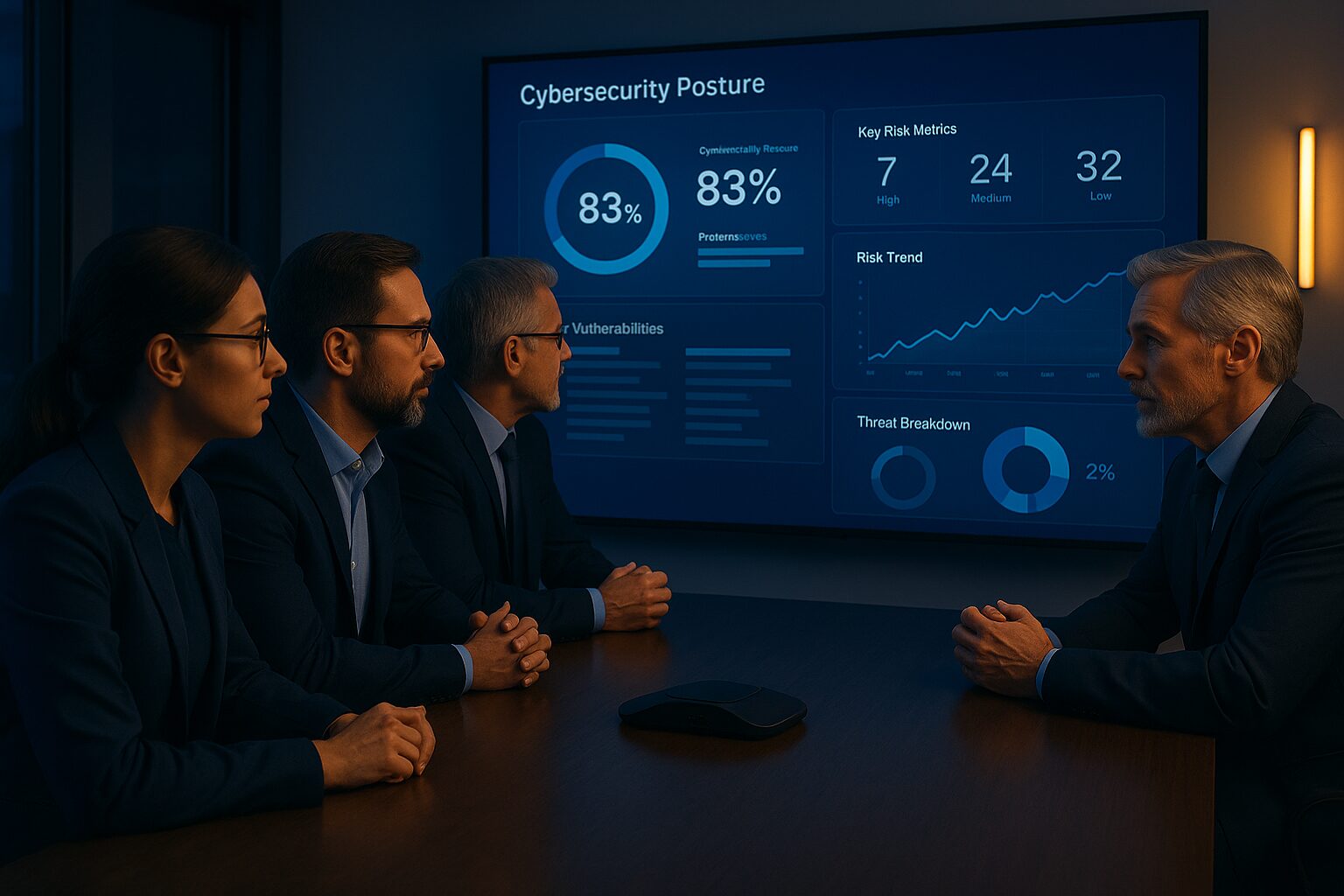Protecting against cyber attacks is critical for every organization. This article will review how to prevent a cybersecurity data breach with Meriplex.
Summary
In today’s digital age, businesses are increasingly reliant on technology to operate efficiently and effectively. However, with this reliance comes the risk of data breaches, which can be catastrophic for an organization, its supply chain, and its customers. A data breach can result in the loss of sensitive data, financial loss, and reputational damage. To prevent data breaches, many businesses are turning to managed security service providers (MSSPs) to help manage their security posture. MSSPs offer a range of services, including security assessments, threat monitoring, incident response, a security operations center (SOC), and more, all of which can help businesses proactively identify and mitigate potential security threats. By working with an MSSP, businesses can take a proactive approach to security, reducing the risk of data breaches and ensuring the protection of their sensitive information. If you are exploring a working relationship with a managed security services provider, here is a list of services you will experience under a Meriplex partnership that will help prevent future cybersecurity data breaches.
24x7x365 Monitoring and Early Detection
Continuous monitoring and early detection are critical components of an effective cybersecurity strategy for your business. Continuous monitoring involves constantly monitoring a system’s network, endpoints, and other essential assets to detect potential threats or vulnerabilities. This involves collecting and analyzing data from various sources, such as network traffic, system logs, and other security tools. Early detection refers to the ability to identify potential security incidents as early as possible before they can cause significant damage or compromise personal data. By continuously monitoring their operating systems and detecting potential threats early on, organizations can take proactive measures to mitigate the risk of a security breach and minimize its impact.
Incident Response Planning
An effective incident response plan (IRP) for cybersecurity includes a documented set of procedures to detect, contain, and mitigate potential security incidents such as data breaches, malware infections, and unauthorized access attempts. The plan should outline roles and responsibilities for all stakeholders involved, including incident response team members, IT staff, management, and external partners if necessary. It should also include guidelines for communicating with affected parties, regulatory bodies, and law enforcement agencies. The IRP should be regularly reviewed and updated to reflect changes in the organization’s infrastructure and evolving threat landscape. Staff should receive training on the plan and their roles to ensure its effectiveness.
Cybersecurity Awareness Training
Cybersecurity awareness training is a process of educating individuals within an organization about the potential cybersecurity risks and threats they may encounter in their work or personal lives. The training aims to improve employees’ knowledge and understanding of data breach prevention, including best practices for securing confidential information, identifying phishing emails, avoiding social engineering attacks, using strong passwords with multi-factor authentication, surfing social media safely, and reporting suspicious activity. Cybersecurity awareness training can create a culture of data security within an organization and empower employees to take an active role in protecting their own and the organization’s digital assets. It is an ongoing process that should be regularly updated and reinforced to stay current with new threats and vulnerabilities.
Security Policies
Security policies are guidelines and procedures that govern the organization’s cybersecurity practices. They should be regularly reviewed and updated to reflect changes in the threat landscape, technological advancements, and business operations. Failing to update policies can lead to vulnerabilities that attackers can exploit, leaving the organization at risk of data loss, financial losses, and reputational damage. In addition, by reviewing and updating security policies, businesses can ensure that their security practices are aligned with the current threat landscape, regulatory requirements, and industry standards. This helps to improve the organization’s overall security posture and reduces the risk of successful attacks by cybercriminals.
Compliance Monitoring
A business needs to monitor applicable compliance regulations such as HIPAA, PCI DSS, and GDPR to ensure they are adhering to legal requirements and industry standards for protecting sensitive data. Compliance regulations establish specific requirements for data protection, storage, and sharing that businesses must follow to avoid fines, legal penalties, and reputational damage. Failing to comply with regulations can also lead to data breaches and cyber attacks, which can be costly and damaging to the organization. By monitoring applicable compliance regulations, businesses can stay up-to-date with the latest security requirements and take appropriate measures to protect their data and infrastructure. This can help to build trust with customers, stakeholders, and partners and demonstrate the organization’s commitment to responsible data management.
Security Audits
Security audits are a process of evaluating an organization’s cybersecurity practices to identify vulnerabilities, assess risks, and determine the effectiveness of existing security controls. They involve a systematic review of the organization’s IT infrastructure, policies, procedures, and practices and can be performed internally or by external auditors. The purpose of a security audit is to identify weaknesses and areas for improvement and make recommendations for enhancing the organization’s overall security posture. Security audits can help businesses comply with industry regulations and standards and mitigate the risks of cyber attacks, data breaches, and other security incidents. By conducting regular security audits, businesses can proactively identify and address security issues before they become a problem.
Network Monitoring
Network monitoring is the process of monitoring an organization’s network infrastructure, including routers, switches, firewalls, servers, and endpoints, to detect and respond to potential security incidents and performance issues. Network monitoring involves collecting and analyzing data on network traffic, system usage, and other key metrics to identify anomalies, such as unauthorized access attempts, malware infections, and system failures. Network monitoring tools can also provide real-time alerts and notifications to IT staff, enabling them to quickly respond to security incidents and minimize the impact on the organization. By implementing network monitoring, businesses can gain visibility into their network infrastructure and mobile devices, proactively identify and mitigate security risks, and optimize network performance and availability.
Advanced Security Measures
Advanced security measures are cybersecurity techniques and technologies that go beyond basic security practices to provide additional layers of protection against advanced threats and attacks. Advanced security measures typically involve using sophisticated tools such as machine learning algorithms, artificial intelligence, behavioral analytics, and threat intelligence to identify and respond to threats in real-time. In addition, these measures can include advanced endpoint protection, intrusion detection and prevention systems, security information and event management (SIEM) solutions, and cloud-based security services. By implementing advanced security measures, businesses can improve their ability to detect and respond to advanced threats, minimize the risk of data breaches and other security incidents, and protect their digital assets from a wide range of cyber threats.
Stay Up-to-Date with the Latest Developments
Staying current with the latest security developments and trends is crucial in maintaining a proper cybersecurity posture. As technology advances, so do the methods and tools that hackers use to breach systems and steal sensitive or financial information like social security numbers or credit card numbers. By keeping up-to-date with the latest security developments and trends, individuals and organizations can better understand and anticipate potential threats and vulnerabilities and implement proactive measures to mitigate them. It also allows them to adapt to new security risks and technologies, ensuring their systems and data remain protected against emerging threats. Ultimately, staying current with the latest security developments and trends is essential in maintaining a robust and effective cybersecurity posture in today’s ever-evolving threat landscape.
Regular Security Measure Testing
Ongoing testing is an essential component of a comprehensive approach to cybersecurity. As cyber threats continue to evolve, organizations must remain vigilant and ensure that their security controls remain effective against emerging risks. Regular testing allows organizations to proactively identify and address potential vulnerabilities in their systems and apps, helping to prevent data breaches and other security incidents. It also provides a means of continuous improvement, allowing organizations to refine their security controls and processes. Common testing activities include penetration testing, vulnerability assessments, and red team exercises.
Reporting
Cybersecurity performance reporting is crucial in ensuring that organizations can monitor, measure, and improve their cybersecurity posture. By reporting on cybersecurity performance metrics such as incident response times, patching rates, and compliance with security policies, organizations can identify areas of weakness and implement targeted improvements to enhance their overall security. Cybersecurity performance reporting also provides a means of communication between security teams and key stakeholders, including senior management and regulators, allowing them to understand the effectiveness of security measures and make informed decisions about resource allocation and risk management. Ultimately, cybersecurity performance reporting helps organizations maintain a strong and effective security posture, protecting their systems and data from evolving threats and vulnerabilities.
Documentation
Cybersecurity documentation is essential in ensuring that organizations can maintain a comprehensive and consistent approach to cybersecurity. It provides a clear record of security policies, procedures, and controls, as well as incident response plans and security assessments. Cybersecurity documentation allows organizations to identify and address potential vulnerabilities, maintain regulatory compliance, and train employees on security best practices. It also helps to ensure continuity in the event of changes in personnel or organizational structure. Furthermore, cybersecurity documentation can be used to demonstrate due diligence and legal compliance in the event of a data breach or other security incident. Ultimately, effective cybersecurity documentation is crucial in enabling organizations to maintain a strong and effective security posture, protecting their systems and data from evolving threats and vulnerabilities.
Avoid Data Breaches With A Meriplex Partnership
Working with Meriplex can elevate your cybersecurity posture by providing access to specialized cybersecurity expertise, advanced security technologies and tools, and comprehensive reporting and assessments to meet compliance requirements. By partnering with us, you can free up time and resources to focus on core business functions while leaving the security management to the experts, allowing you to achieve your strategic goals, innovate, and grow in a secure environment. Contact us today for more information on our comprehensive cybersecurity solutions that will help your organization dodge the impact and cost of a data breach.



